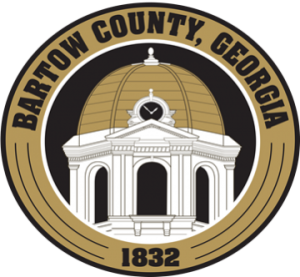The local Extension office has received numerous calls in recent weeks about warm-season lawns that are struggling to green-up this spring. Based on conversations with my colleagues, this appears to be a wide spread issue throughout North Georgia. What we are observing is that some lawns are very patchy and thin as well as being very slow to regenerate this spring.

Usually, by the end of May, warm-season grasses have greened-up. However this year, some bermudagrass and zoysiagrass lawns still have a significant amount of old, brown leaf material in them. This is likely the result of several compounding factors.
The impact of last fall’s drought and exceptional heat are likely affecting green-up this season, especially in non-irrigated lawns. Lawns that did not receive supplemental water entered dormancy this past fall in an already stressed state.
A second factor influencing green-up could be all the rainfall this winter. Water is a good buffer of heat; meaning, that it takes more energy (i.e. from the sun) to warm a wet soil than a dry soil. Cool soil temperatures will slow down the growth rate of warm-season grasses and can delay their ability to emerge from dormancy. Between January and May, we were about 10 inches above normal for rainfall during that time period.
The average 4-inch soil temperature for the entire month of May in Griffin, GA – central for the state – was 71.2 degrees F. That is 5.6 degrees F lower than for the same time last year. Similarly, the average maximum air temperature this May has been 8 degrees F cooler than May 2019.
Also, from the pictures, descriptions, and observations we’ve seen, the lawns with considerable brown areas usually have a higher mowing height than is recommended for bermudagrass and zoysiagrass. The mowing height should be 1 to 2 inches for these lawn grasses year round.
The extra leaf canopy and thatch from mowing too high can act as an insulator, preventing sunlight from warming the soil quickly. For these lawns, we have suggested the grass be mowed at 1 to 2 inches and remove the excess leaf biomass. The objective is to open the turf canopy, permitting sunlight to reach the soil surface.
Taking it a step further, consider core aerating your lawn. Opening holes into the soil profile permits warm air into the root zone, warming the soil from the inside-out. By warming the soil, rhizomes will initiate new shoots, eventually reaching the soil surface and thickening the lawn. This will help reinvigorate a lawn, especially when followed by fertilizer that can move more quickly into the root zone.
Another good idea would be to submit a soil sample for testing, especially if it’s been a few years since you’ve done one. Many landscapers don’t take the time to do this for clients unless they request it. Whether or not your landscaper has done a soil test, it’s a good way for you to check and make sure they are applying the correct amount of fertilizer. Otherwise, you really don’t have any way of knowing what your landscaper is actually putting on the lawn.
Many of the soil samples we’ve tested recently are either showing low phosphorus or an acidic soil pH. Maintaining a proper pH and adequate phosphorus levels are essential to a healthy root system. If your lawn was nutrient deficient last summer, it may not have had a deep, healthy root system to survive the drought, much less have the ability to regenerate this spring.
The Extension office now has a drop box for soil samples. This means we can accept your sample anytime, including nights and weekends. Soil tests cost $9 and take about a week to get the results back from our laboratory at UGA.
###
Paul Pugliese is the Extension Coordinator and Agricultural & Natural Resources Agent for Bartow County Cooperative Extension, a partnership of The University of Georgia, The U.S. Department of Agriculture, and Bartow County. For more information and free farm, lawn, or garden publications, call (770) 387-5142 or visit our local website at ugaextension.org/bartow.
